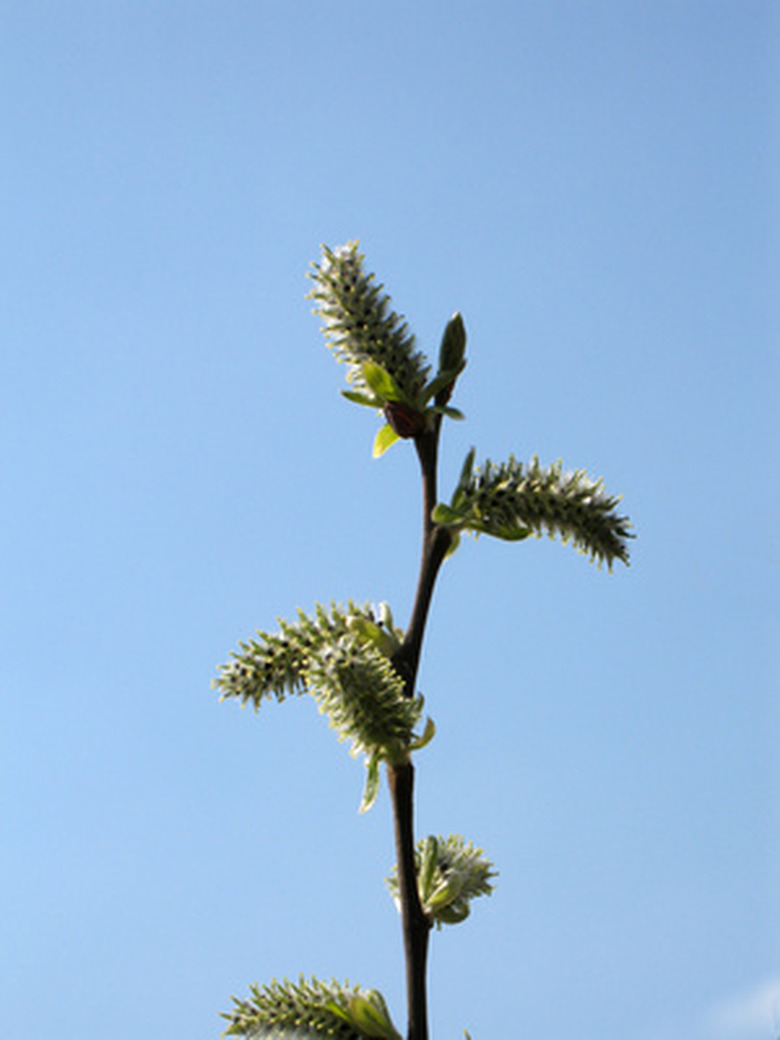Blue Arctic Willow Tree
A spreading shrub or upright small tree, the blue Arctic willow (Salix purpurea) also is called purple osier because of its reddish purple young twigs. Reaching a mature height and width of 10 to 15 feet, it is fast-growing and tolerates adverse growing conditions and harsh pruning. Grow it in USDA Hardiness Zones 3 through 7.
Origins
Blue Arctic willow hails from Europe, Central Asia and extreme northern Africa along the Mediterranean Sea.
Ornamental Features
The arching branch tips remain flexible in the wind and are colored red to purple, the origin for the alternative common name of purple osier or purple osier willow. In early to mid-spring, the young wigs bear slender silvery catkins and those that are male-gendered produce purple anthers that become yellow once pollen sheds. As the catkins fade and dry, the leaves emerge. Oblong leaves mature with a deep green to blue-green color with a noticeably silvery or gray underside. In the wind, the pliable branches flash the leaf undersides to create a bi-colored effect, changing between green and silvery blue-green.
- A spreading shrub or upright small tree, the blue Arctic willow (Salix purpurea) also is called purple osier because of its reddish purple young twigs.
- In the wind, the pliable branches flash the leaf undersides to create a bi-colored effect, changing between green and silvery blue-green.
Growing Requirements
Already a fast-growing plant, optimal establishment and growth occurs in moist to wet soils although tolerance to drier and nutrient-poor soils exists. Plant it in partial to full sun locations where it receives at least six hours of direct sunlight daily. Do not expect this shrub to prosper where the local summertime climate includes high heat and lots of humidity. For the most intense twig coloring and new foliage appearance, plan on pruning back all branches to a height of 12 inches every two years after the spring flowering.
Uses
Blue Arctic willow provides gardeners an excellent option for a windbreak, shelterbelt or screen in cold winter or windy regions. The ability for this fast-growing plant to tolerate infertile and dry soils also lends its use for an inexpensive living fence or hedge on new residential properties. From an ornamental standpoint, the twigs provide visual interest in winter and the "pussy willow" catkins in spring delight children and adults as well as announce the arrival of spring. This willow species responds well to repeated light or harsh rejuvenative pruning as needed. In wet soil conditions, suckering shoots rise from the plant roots to form a thicket, helping in shoreline stabilization or erosion control.
- Already a fast-growing plant, optimal establishment and growth occurs in moist to wet soils although tolerance to drier and nutrient-poor soils exists.
- The ability for this fast-growing plant to tolerate infertile and dry soils also lends its use for an inexpensive living fence or hedge on new residential properties.
Varieties
Several variants or cultivated varieties of blue Arctic willow exist. Growing only about 3 to 5 feet in height is the variety Nana, also called Gracilis. Pendula bears sprawling, weeping branches and grows as a graft upon an upright trunk. Slightly more bluish foliage appears on Canyon Blue, reaching a mature height less than 10 feet.
